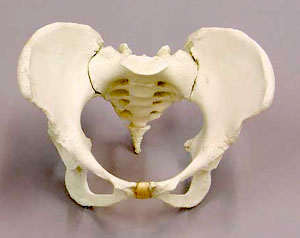 HeartKeepers™
HeartKeepers™
by Judith Elaine Halek and Sondra Wynne Fields
(Copyright 2010 Virtual Syncon Development Team
& the Foundation for Conscious Evolution)
One-heartedness occurs when every single life form lives in harmony and balance with every other life form. It’s our true nature…encoded in our DNA. – John Kimmey (Last Carrier of the Hopi Prophesy, founder of The Sustainable Native Agriculture Center in New Mexico and author of Light On The Return Path.)
Introduction
 The archetypal Wise Old Woman can be seen as the ultimate Heart Keeper as she is the mid-wife of both birth and death. She issues the beating heart of each Being into the world and when the time of the beating heart has ceased, she assists each Being on its evolving journey.
The archetypal Wise Old Woman can be seen as the ultimate Heart Keeper as she is the mid-wife of both birth and death. She issues the beating heart of each Being into the world and when the time of the beating heart has ceased, she assists each Being on its evolving journey.
Prior to ten years ago, there was a group of Balinese men called ‘tukang kandung’ which translates as a ‘womb worker’. They assisted hundreds of babies using massage techniques and traditional herbs. These men received information about the traditions of this work from their fathers on their deathbeds. So generation after generation, only the male lineage would receive this sacred and privileged information.
These men could be seen as co-creating with the wise old woman as heart keeper by tapping into this most ancient of feminine archetypes.
Delving into the mystery and intrigue of the heart, take the word earth, put the ‘h’ at the beginning of earth and the new word is heart. Earth and heart are one.
The first peoples of Turtle Island, also known as the United States, honor the beating heart at all ceremonies. For them the beating of the drum represents the heartbeat of mother earth; the heartbeat of the people. For many indigenous people at the center of mother earth and her drum resides the hearth, (earth and heart combined) the center of nourishment brought forth by grandfather fire.
The Virtual SynCon must have a hearth that warms the heart and sustains it’s bright burning fire.
Labor Support Doulas assist women and their partners during labor and birth as Heart Keepers. They ‘hold the space’ for semblance and symmetry. This is done when someone on the birth team, (doctors, midwives, nurses, anesthesiologists, grandmothers, aunts, uncles, friends) becomes out of resonance with the core couple (mom/partner and baby). It is up to the Doula to help bring back the energy through communication, compromise and breath. Doulas help the couple to look at their options and ultimately encourage them to make the final decisions. A Doula, Heart Keeper, requires an inordinate amount of patience, ability to release ego, keep calm and quietly redirect the mother and/or partner into their bodies, breath and connection to their baby. ‘Doula’ is a Greek word meaning, “woman slave.” In Zulu, the word, ‘Dula’ means “To Be.
Doulas and Heart Keepers are ‘Be-ers’ in the group.
Definition and Duties
The Heart Keeper, female or male, attuned to the this ancient feminine energy,  welcomes each beating heart into the group heart and stands available to assist each individual as they come forth to contribute and share their gifts. In this way the heart beat of the group is sustained and nourished. Likewise, if a heart no longer is willing or able to beat with the whole, it is the Heart Keeper who helps with the transition out of the group.
welcomes each beating heart into the group heart and stands available to assist each individual as they come forth to contribute and share their gifts. In this way the heart beat of the group is sustained and nourished. Likewise, if a heart no longer is willing or able to beat with the whole, it is the Heart Keeper who helps with the transition out of the group.
The heart is the first organ to develop in the fetus. It begins beating at 3 weeks and one day from fertilization and a group of organs called the circulatory system is the first body system to reach a functioning synergistic state. There are three basic components to the circulatory system. The heart serves as the pump, blood vessels carry the blood throughout the body and the lungs and the heart supplies oxygen.
Like the heart in the physical body, the Heart Keepers become the primary force within the body of the group. They pump support toward the life energy of each of it’s members by reminding everyone to ‘breathe’ when the supply of oxygen has become depleted. Oxygen depletion is indicated through a lack of individual or group resonance. How the Heart Keeper might implement is mentioned below.
In labor and birth when a woman chooses not to cut the umbilical cord and allow the natural uninterrupted detachment from the baby to it’s cord, it’s called a ‘lotus birth.’ The lotus bud blossoms on a flower and offers it’s pure beauty. The ‘lotus mudra’ in yoga represents the awakened heart initiated by Divine Grace. The Heart Keeper is like this lotus blossom. They quietly and succinctly like the flower, respond to the energetic exchanges of sound, breath, air and quiet.
What has been referred to as the Vagus Nerve Breath is a helpful breathing technique for increasing the flow of oxygen and relaxation into the body. This is a recommended tool for Heart Keepers to use and teach other group members:
Take a deep, deep breath into your belly
Let the breath out with an enjoyable, audible sigh…ahhhhh.
You will automatically smile
Your being will begin to open and relax
Breathing in this way activates the vagus nerve, a part of the parasympathetic nervous system, which releases the “cuddle hormone” oxytocin. This breathing technique could be utilized at the beginning of the meeting lead by the Heart Keeper and/or implemented throughout the meeting when the Heart Keeper deems it necessary.
Look at the core word in both heart and earth; ear. It has been said that “the eyes are the window to the soul yet, it is through the voice that we touch the soul.”
One of the duties of a Heart Keeper is being attuned to the individual voices within the group.The Heart Keeper listens to the underlying messages found between the words and underneath the expressions as guides to understanding
When a voice(s) is out of resonance a Heart Keeper will gently and lovingly bring that voice back into resonance if she/he feels this is a disruption to the group resonance.
The heart is the core, the center, the beating pulse. The Heart Keeper could  begin and/or end a meeting with a beautiful drum beat after the resonance has been established reminding us all of the importance of keeping the heart of our group in its rhythmic beat.
begin and/or end a meeting with a beautiful drum beat after the resonance has been established reminding us all of the importance of keeping the heart of our group in its rhythmic beat.
The Heart Keeper is one who ‘holds the resonant heart space’ for the group to express individually and collectively. To accomplish this the Heart Keeper must be attuned to the heart pulse of the group using their highly sensitized antennae.
How to Sensitize The Heart Keeper Antennae
http://www.heartmath.com/Personal-Growth/Quick-Coherence-Technique.html
The Quick Coherence® Technique helps you create a coherent state, offering access to your heart’s intelligence. It uses the power of your heart to balance thoughts and emotions, helping you to achieve a neutral, poised state for clear thinking. It is a powerful technique that connects you with your energetic heart zone to help you release stress, balance your emotions and feel better fast.”
The Quick Coherence Technique takes–One Minute.
1. Step 1: Heart Focus–Focus your attention on the area around your heart, the area in the center of your chest.
2. Step 2: Heart Breathing–Breathe deeply but normally and feel as if your breath is coming in and out through your heart area.
3. Step 3: Heart Feeling– As you maintain your heart focus and heart breathing activate a positive feeling. Recall a positive feeling, a time when you felt good inside and try to re-experience the feeling. One of the easiest ways to generate a positive, heart based feeling is to remember a special place you’ve been to or the love you feel for a close friend, family member or treasured pet. This is the most important step.
Suggested Methods for Reestablishing Resonance
 • First, use breath techniques, your own or those presented here, to bring yourself into coherent resonance and connection with the Divine Source within.
• First, use breath techniques, your own or those presented here, to bring yourself into coherent resonance and connection with the Divine Source within.
• Through the heartbeat of the drum — in the beginning, middle or end of the meeting — tune into Divine Source, the heart center of each in the group and establish energetic connection.
• Sound the drum for 30 seconds, pause in silence for 30 seconds and take the group through Quick Coherence Technique at the beginning of the meeting. This technique could also be used throughout the meeting requested by the group facilitator or initiated by the Heart Keeper.
• The Heart Keeper communicates with the group with gentle comments or questions to help empower people to speak their truth.
• Observe and witness the group as children in their fascination, curiosity and joyful discoveries.
• Recognize coherent and incoherent feelings in your body at the beginning, during and after the group gathering.
This will help to:
• Create a safe and secure environment for all individuals to speak and be heard.
• Generate a sense of belonging and connectedness.
• Set the tone for honoring each person’s place in the group.
Purpose
The Heart Keeper is here to sustain the group field of energy. The following is a story of how an indigenous culture in Mexico keeps their community in a healthy state by allowing the ebb and flow of life to unfold naturally.
The Huichol Indians of Mexico have access to a kind of genetic memory called the Iyari that connects them with all that has ever been and always will be. Traditionally, “Huichol people remembered this memory and acknowledged it daily.” The Iyari is described by some as being like a cord of light or energy that emanates from a person’s heart connecting one to this ancient memory, not unlike the core of the evolutionary spiral of which Barbara Marx Hubbard speaks. One can “know” or “remember” when the heart is open.
Huichol men still following the traditional way of life have soft feminine faces. Their “feminine side,” psychologists in this country would say, is well integrated; they find great joy in their children, are gentle, firm
Preparation (Before)
The Heart Keeper prepares him/herself by creating an intention to be keeper of heart communication. Space is made conducive to ‘attentive listening’ by closing the door, turning off disruptive rings, knocks or interruptions to create a quiet uninterrupted place.
Helpful Skills for a Heart Keeper to Cultivate
When there is peace within the heart, there is resonance. The Peace Keeper and Heart Keeper share the common goal of creating a peaceful harmony that nurtures creative growth. The following skills were inspired by the teachings of peace keeper, James O’Dea.
Preparation (Before)
The Heart Keeper prepares him/herself by creating an intention to be keeper of heart communication. Space is made conducive to ‘attentive listening’ by closing the door, turning off disruptive rings, knocks or interruptions to create a quiet uninterrupted place.
Elemental Concepts and Skills to Remember:
1. Everything is frequency–vibrating resonance. Everything is pulsing.
2. These frequencies synchronize with the universe in both qualities and quantities. It is helpful to strive to become a precise interpreter of energy.
3. With energy and consciousness patterns are created.
out and help to find resolution regarding the suggestion or conflict.
1. A non-judgmental mind allows one to see the pattern.
2. Lead from your center, your ground of being.
3. Negative energy is transformed when you speak from your core to the core of another.
4. Use Spiritual Akido. Go around the dissonance by going to the heart or soul of another. Using Spiritual Akido you act to transform the problem, to awake a solution.
5. Find common ground. Breath in new energy.
Energy does not go away: it waits to be transformed. When out of sync energy is present, a Heart Keeper can either step into it in a way that disarms the discordant aspect or step away from it, breathe and become the observer. Either approach will potentially place you in the center of the vortex where stillness and clarity abound.
Procedure (During)
At the beginning of each meeting the Heart Keeper requests everyone to set an intention to proceed with open hearts. While intentions are being initiated, a soft drumming could be sounded for 1 minute, followed by 1 minute of silence, broken by the sound of one drum beat.
 SyncCon Pub
SyncCon Pub
As stated in the introduction, every SynCon must have a hearth, (earth and heart) where people can come to kindle and rekindle the warmth of the group heart. That heart center is the SynCon Pub as illustrated in the story below.
In a little mountain town there was once a pub that came to be known as the “town womb.” Much like the pubs in J.R.R. Tolkien’s classic, The Lord of the Rings, this pub was a place where folks came to meet, share good food, drink and laugh together. In this little pub, in this little mountain town much heartfelt news was shared over the years. They celebrated births, graduations, promotions, mourned deaths, supported each other through crisis and generally made it possible for all to remain in this rather rough and sometime difficult climate. Rich, poor, town officials and day labors, educated and uneducated, religious/nonreligious, it didn’t matter; all were accepted for who they were.
At this time in the history of this mountain community there were those who swore that the heart of the town kept beating because of this all inclusive meeting place. Spats and disagreements somehow got worked out and the town maintained it’s integrity. Things were down home, out in the open (it’s hard to hide in a small town) and real.
In a virtual SynCon community, it is paramount as proceedings unfold to openly voice and reinforce the understanding that differences are not just allowed; they are welcomed and embraced. No one need fear being the “odd man out” or the proverbial “rotten apple” disrupting the resonant field of the group. The intention is not to seek out conflicting thoughts, but to allow, accept, appreciate and make room for valued truth and honesty that is inherent in feeling free to voice differences. Differing ideas are welcomed. Questions about orchestration or implementation of group happenings are considered a vibrant and vital element of healthy community building.
SynCon Pub Follow Through
If a situation is too complex or involved to go into depth at any particular meeting, then the SynCon, Heart Keeper Pub is the next step, the safe place for the person(s) to go to express themselves. So often groups shy away from discord because they don’t know how to handle disagreement in a productive manner. They don’t have a pub to go to or a heart keeper to listen.
The Heart Keeper Pub is a virtual forum open 24/7 where members can go to safely have their voice heard if they felt not heard, start a dialogue regarding a disagreement or make suggestions to enhance certain procedures. With permission from an individual, the Heart Keeper can share with the group in the next meeting, what came up and out and help to find resolution regarding the suggestion or conflict.
Malcom Gladwell wrote the book, “Outliers”. Outliers is noun with the definitions: 1: Something that is situated away from or classed differently from a main or related body, 2: a statistical observation that is markedly different in value from the others of the sample.
In the introduction to “Outliers,” Gladwell writes about a community of people, migrating from Roseto Valfortore, one hundred miles southeast of Rome in the Italian province of Foggia. In January of 1882, a group of Rosetans, ten men and one boy, migrated to New York. They relocated to ninety miles west of New York City to the town of Bangor, Pennsylvania. In 1883, fifteen Rosetanas left Italy and joined the original eleven. In 1894, twelve hundred Rosetans migrated to Pennsylvania and left their old village abandoned.
In the 1950’s, studies were conducted by physicians and sociologists on the Rosetan’s and the results were as follows: there was no suicide, no alcoholism, no drug addiction and very little crime. No one was on welfare, no peptic
If a situation is too complex or involved to go into depth at any particular meeting, then the SynCon, Heart Keeper Pub is the next step, the safe place for the person(s) to go to express themselves. So often groups shy away from discord because they don’t know how to handle disagreement in a productive manner. They don’t have a pub to go to or a heart keeper to listen.
The Heart Keeper Pub is a virtual forum open 24/7 where members can go to safely have their voice heard if they felt not heard, start a dialogue regarding a disagreement or make suggestions to enhance certain procedures. With permission from an individual, the Heart Keeper can share with the group in the next meeting, what came up and ulcers or heart attacks before 65 years. People were dying of old age. So why were these people, this community considered outliers? And what initiated or supported these kinds of statistics? Was it diet, exercise, genetics, water or location?
After much investigation it was reported the single most crucial element for the health and well being of these people was the fact they lived, related and functioned as a community. People of all walks and economic status ate together, socialized together, and helped each other
There were no divisions or separations. It did not matter if there was someone acting as a Heart Keeper. They were Heart Keeper’s to each other. This community is a key example of how Heart Keeper Resonance is infiltrated within a large group of people where the health of the individuals and the community is influenced.
We can postulate what keeps a community healthy and vital is a strong shared purpose or desire. The Huichol People were bonded together by the spiritual path they walked. The Mountain People were bonded together by their love for the mountains and the environment in which they lived. The Rosetan People shared a deep cultural bond that literally migrated them as a whole community to a new country that offered a potential their country didn’t. Barbara Marx Hubbard, with her visionary eyes of an evolving humanity is the cohesive factor in attracting and holding together like hearted people that compose the SynCon.
“Harness the energies of love, and so for the second time in the history of humanity discover fire.”- Teilhard de Chardin
Closure
• Records any notes needed for further reminders and situations of attention.
• Closes the space energetically.
• Creates a gratitude prayer.
• Is available if an individual is needing a compassionate listener after the program is concluded.
Multi Media Presentation
1. http://www.freesound.org/samplesViewSingle.php?id=21409
2. http://www.youtube.com/watch?v=7eFn8Cgcx8g


 ~
~ When one takes rolaids, it is COUNTER PRODUCTIVE to the absorption of the iron in the body. Rolaids is an ANTACID, (not acidic) and you NEED acid to absorb the iron in your body. So, you are just canceling out the iron supplement each time a rolaid is taken. It doesn’t matter if one takes one or ten…IT IS NOT GOOD! Research shows if a pregnant woman has to choose between chalk and rolaids, the more favorable choice is the chalk. It doesn’t have the antacid element to it. STOP rolaids immediately if your doctor has suggested this as a solution away from the chalk.
When one takes rolaids, it is COUNTER PRODUCTIVE to the absorption of the iron in the body. Rolaids is an ANTACID, (not acidic) and you NEED acid to absorb the iron in your body. So, you are just canceling out the iron supplement each time a rolaid is taken. It doesn’t matter if one takes one or ten…IT IS NOT GOOD! Research shows if a pregnant woman has to choose between chalk and rolaids, the more favorable choice is the chalk. It doesn’t have the antacid element to it. STOP rolaids immediately if your doctor has suggested this as a solution away from the chalk. Floradix is a liquid formula that will help to enhance the iron absorbtion in one’s body when eating iron rich foods.
Floradix is a liquid formula that will help to enhance the iron absorbtion in one’s body when eating iron rich foods. 1. Ferrous Phosphate: 6X or 12X strength, take 1-4 times per day, 4 pellets. This very useful cell salt is known as the “oxygen carrier”. It has the ability to carry oxygen to all the cells of the body for use in conversion to energy.
1. Ferrous Phosphate: 6X or 12X strength, take 1-4 times per day, 4 pellets. This very useful cell salt is known as the “oxygen carrier”. It has the ability to carry oxygen to all the cells of the body for use in conversion to energy. The 12 Tissue/Cell Salt Combination As the name implies, this is a combination of all 12 salts in a single tablet. This combination can be used daily in much the same way as you would take a vitamin or supplement. To treat specific conditions, however, select one of the single salts listed above. RECOMMENDED POTENCY – 6X is the most widely used potency. These are all the different MINERALS combined into the 12 Tissue/Cell Salts.Calcarea Fluoricum Calcarea Phosphoricum Calcarea Sulphuricum Ferrum Phosphoricum Kali Muriaticum Kali Phosphoricum Kali Sulphuricum Magnesia Phosphoricum Natrum Muriaticum Natrum Phosphoricum Natrum Sulphuricum Silicea (Silica)
The 12 Tissue/Cell Salt Combination As the name implies, this is a combination of all 12 salts in a single tablet. This combination can be used daily in much the same way as you would take a vitamin or supplement. To treat specific conditions, however, select one of the single salts listed above. RECOMMENDED POTENCY – 6X is the most widely used potency. These are all the different MINERALS combined into the 12 Tissue/Cell Salts.Calcarea Fluoricum Calcarea Phosphoricum Calcarea Sulphuricum Ferrum Phosphoricum Kali Muriaticum Kali Phosphoricum Kali Sulphuricum Magnesia Phosphoricum Natrum Muriaticum Natrum Phosphoricum Natrum Sulphuricum Silicea (Silica) Spinach is a source of non-heme iron, which is usually found in vegetable sources. Unlike heme iron found in animal products, non-heme iron is not as bioavailable to the body.
Spinach is a source of non-heme iron, which is usually found in vegetable sources. Unlike heme iron found in animal products, non-heme iron is not as bioavailable to the body.


 ~
~ Of course, I am in favour of the abolition of electronic fetal monitoring but it would be far more uplifting if this was being done for some sort of health improvement and not just more ways to cover butt in court.
Of course, I am in favour of the abolition of electronic fetal monitoring but it would be far more uplifting if this was being done for some sort of health improvement and not just more ways to cover butt in court. One of the midwife “tricks” that we were taught was to ask the mother’s shoe size. If the mother wore size five or more shoes, the theory went that her pelvis would be ample. Well, 98 percent of women take over size five shoes so this was a good theory that gave me confidence in women’s bodies for a number of years. Then I had a client who came to me at eight months pregnant seeking a home waterbirth. She had, up till that time, been under the care of a hospital nurse-midwifery practise. She was Greek and loved doing gymnastics. Her eighteen-year-old body glowed with good health, and I felt lucky to have her in my practise until I asked the shoe size question. She took size two shoes. She had to buy her shoes in Chinatown to get them small enough—oh dear. I thought briefly of refreshing my rusting pelvimetry skills, but then I reconsidered. I would not lay this small pelvis trip on her. I would be vigilant at her birth and act if the birth seemed obstructed in an unusual way, but I would not make it a self-fulfilling prophecy. She gave birth to a seven-pound girl and only pushed about twelve times. She gave birth in a water tub sitting on the lap of her young lover and the scene reminded me of “Blue Lagoon” with Brooke Shields—it was so sexy. So that pelvis ended the shoe size theory forever.
One of the midwife “tricks” that we were taught was to ask the mother’s shoe size. If the mother wore size five or more shoes, the theory went that her pelvis would be ample. Well, 98 percent of women take over size five shoes so this was a good theory that gave me confidence in women’s bodies for a number of years. Then I had a client who came to me at eight months pregnant seeking a home waterbirth. She had, up till that time, been under the care of a hospital nurse-midwifery practise. She was Greek and loved doing gymnastics. Her eighteen-year-old body glowed with good health, and I felt lucky to have her in my practise until I asked the shoe size question. She took size two shoes. She had to buy her shoes in Chinatown to get them small enough—oh dear. I thought briefly of refreshing my rusting pelvimetry skills, but then I reconsidered. I would not lay this small pelvis trip on her. I would be vigilant at her birth and act if the birth seemed obstructed in an unusual way, but I would not make it a self-fulfilling prophecy. She gave birth to a seven-pound girl and only pushed about twelve times. She gave birth in a water tub sitting on the lap of her young lover and the scene reminded me of “Blue Lagoon” with Brooke Shields—it was so sexy. So that pelvis ended the shoe size theory forever.




























